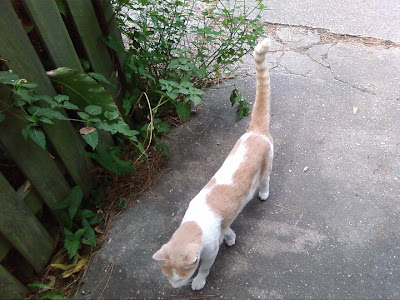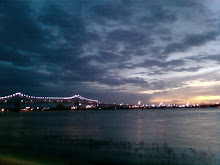The area is Baton Rouge's oldest residential neighborhood and contains a mixture of architectural styles ranging from colonial to post-modern. This mixture and melange of disparate elements is the critical aspect which gives S-Town its colorful and unique character. Unlike other inner city neighborhoods its proximity to downtown and the Capitol have continued to render it a convenient and livable place of habitation, and thus S-Town has not experienced the decay and devastation wrought upon other older urban neighborhoods. The residential component comprises a mixture of races, classes, professions, and backgrounds, thus giving S-Town a diverse and tolerant feel which is entirely absent in most modern residential areas. In the BR area Spanish Town is known as the 'bohemian' neighborhood for this reason.
But as always the story is more complex, and in reality beyond the residential component there is a mixture of uses of urban space that provides a richer texture beyond what one will find in the average suburban wasteland with its strict separation of even minute gradations of land uses. Also the story of S-Town is the story of continued incursion along the edges, nibbling away at the small patch of tout ensemble which, despite these external threats, has always managed to retain its overall integrity upon a smaller space.
The essence of S-Town is its streetscapes:

Narrow, tree lined streets scaled for human activity create an outdoor 'room' scaled to the pedestrian and the individual. The external environment complements the historic homes of the area and creates a desire to spend as much time outside as inside.

Note how automobiles can be accommodated in the human scale environment - the urban fabric need not be destroyed to provide space for them. There is no mutual exclusion between owning an automobile and residing in a pedestrian scaled neighborhood.

Homes of historical value share urban space with...

...structures of more recent architectural vintage. Most of the more recent additions are apartments, testifying to the continued desirability of the area.

The Capitol Grocery, a local landmark and unofficial social center for the community. A combination grocery, restaurant, and gift store, the existence of such a place proves the complete and utter falsehood that placing commercial establishments in residential areas is harmful. Without the grocery, a vital nerve center and gathering place for the community is lost.
Spanish Town is primarily residential, but does accommodate other uses (mainly along its edges), primarily offices:

Though this modern office structure is grossly out of character for the neighborhood, its presence does not appreciably reduce the area's character, proving that a resilient neighborhood can absorb a few out of nature elements if the tout ensemble is solid enough overall.
Large scale incursions, however, serve no positive purpose and are only destructive to the urban fabric. Thankfully, in Spanish Town's case, these incursions only occupy the neighborhood's edges:

This parking deck associated with the Capitol complex obliterated an entire city block when constructed. Certainly it is not attractive at all to look at.

Generally the interface between S-Town and the Capitol grounds, which comprises the neighborhood's western edge, is reasonable. This street (North 5th) separates the residential area from the attractive green space of the Capitol park.

Further south, the neighborhood's corner brings it adjacent to downtown with its skyscrapers.

Another diss to S-Town and the tout ensemble occurs here as the fully utilitarian rear (freight entrances and all) of the post-modernist State Museum occupies the street frontage, immediately opposite residences.
A few dozen feet south we encounter this incongruous sight:

Surrounded by the new fascist-inspired Department of Environmental Quality headquarters and attendant useless green space is this uplifting example of "the little old lady who wouldn't sell."

Making a stand for a once vibrant residential block in the face of the monumental scope of State centralized planning, this lone house is now practically surrounded by State office towers on three sides.

The Bureaucracy looms large here. These massive incursions are actually very recent, proving that when it comes to glorifying State power, even in this allegedly enlightened day and age, nothing else matters.
Spanish Town, if anything else, is known for its quiet beauty:




Cats seem to be the pet of choice among area residents:

One of many felines we encountered on our walks.
To the south, wide North Street comprises an abrupt caesura separating S-Town from the downtown commercial area:

A key arterial from the freeway into downtown and the bureaucratic precinct, little traffic is encountered on this Sunday afternoon.
While not totally pedestrian unfriendly, the width of the street clearly demarcates the boundary between the pedestrian oriented neighborhood and the more auto-centered wasteland of the outer downtown area to the south.
Spanish Town as a neighborhood historically ventured south of this artery, and vestiges of residential use can be found all the way south to the vicinity of the Federal courthouse. Many of these fine historic residences have been tastefully converted into offices:

Venturing hazardously close to the Interstate which is never far away even in this vicinity, even here we enounter the graceful living of a past era:

An apartment tower for senior citizens lies nearby, and is an very obvious landmark in the neighborhood:

Even in this zone of the auto, historic homes can be found peering between modern skyscraper towers:

Despite the clear architectural incursion of the apartment tower, due to its residential aspect, its placement at the neighborhood's edge, and the relatively small building footprint, it actually fits well into the neighborhood:

To the tower's rear is a small pocket park which includes a garden that the residents tend and maintain:


The articulated architecture of the homes and well manicured gardens give Spanish Town its physical character:


The narrowness of the streets clearly communicates the pre-automobile nature of the area:

Above all, the presence of history and the continuity to the past can be felt:

This ancient stone marker at Spanish Town Road and North 5th Street denotes the boundary between the neighborhood and what was once the Federal military installation, later the campus for LSU and now the site of the Capitol grounds. Spanish Town owes its foundation to the military post which existed here in colonial times.
Finally, it is instructive to study the relationship between S-Town and the adjacent Interstate:

Approaching the freeway, with the Spanish Town Road overcrossing visible. The pedestrian friendly feel remains even to the neighborhood's edge.

The state makes a small concession to the human element on the freeway frontage road (which doubles as a city street). This roadway leads directly from I-110 southbound.

Homes do lie adjacent to the Interstate, exposed to the constant roar of traffic. The freeway is situated to the left behind the tree buffer.

The Interstate! At this point where it passes under S-Town Road, it lies in an open cut. To the south, it will rise upon the antiquated viaduct section that bypasses downtown.

Looking northeast toward the Governor Mansion's curve, with the ugly International Style DOTD headquarters looming in the background. The freeway here is a product of crude 1950s design standards, as can be ascertained with a careful glimpse.
Though the freeway creates a noisy and unpleasant eastern interface to the neighborhood, it also comprises a clear boundary for the area. In this case, such a boundary may be welcome, as the area to the east of the freeway at this location is a rather rough and unpleasant neighborhood which contains some of the city's largest expanses of urban prairie.
The clear demarcation of Spanish Town may be its saving grace. In isolation, it has grown resilient and has managed to preserve its tout ensemble in the face of the ever changing and increasingly anti-human urban environment.


No comments:
Post a Comment